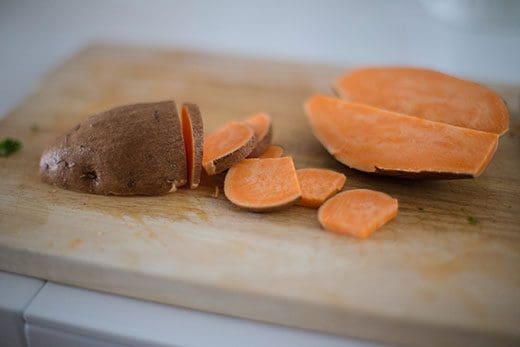By Pat Melgares, K-State Research and Extension news service
Manhattan, KS- A potato is a potato is a potato…right?
Maybe not, says Kansas State University food scientist Karen Blakeslee.
“If you taste a whole vegetable, such as a baked sweet potato, compared to slices of sweet potato that are baked, you’ll have two different foods,” said Blakeslee, who is also coordinator of the university’s Rapid Response Center for food science.
“Cutting the vegetable opens up the cell structure to allow the natural sugars and proteins to interact with the heat,” she said. “Taste the sweet potatoes side-by-side and you will pick up different flavor compounds.”
Cutting vegetables to roast or bake can “take flavor to another level,” according to Blakeslee, because of a concept known as the Maillard reaction.
“The Maillard reaction is a non-enzymatic reaction between amino acids (that make up proteins) and reducing sugars (such as glucose and fructose) in the presence of heat,” Blakeslee said.
“In some cases, it is a desirable reaction, such as browning meat or baked bread, or roasted coffee beans. But in other cases, it is detrimental – such as in dry milk powder if it is stored improperly. It’s not the same as caramelization, which is a thermal decomposition of certain sugars in food (such as making caramel candy).”
Vegetables can be tasty regardless of the way consumers prepare them, Blakeslee said; it’s just a matter of preference.
“Try different ways to prepare and cook vegetables,” she said. “From baking, roasting, sautéing and more, the preparation can add a lot of variety to any meal.”
She adds: “Using different preparation methods can take a once-hated vegetable to a favorite vegetable.”
Blakeslee publishes a monthly newsletter called You Asked It! that provides numerous tips on being safe and healthy. More information is also available from local extension offices in Kansas.













